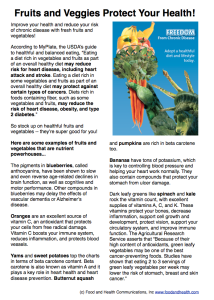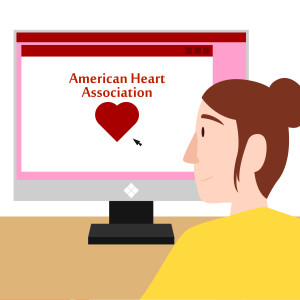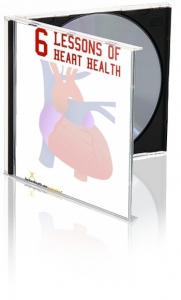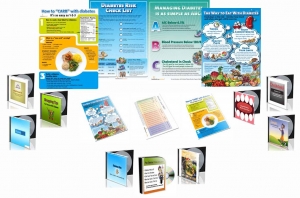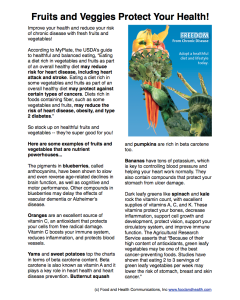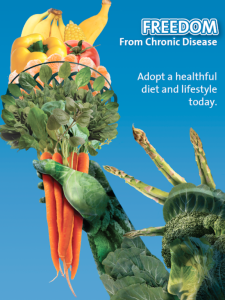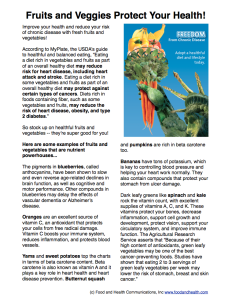Bonus Alert: This post contains a free handout!
What do healthful eating and the Statue of Liberty have in common? You may be surprised by the answer.
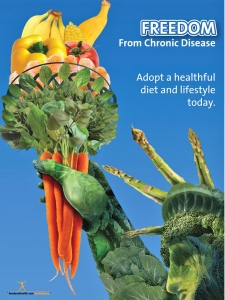 When I went to see the Statue of Liberty, I was struck by her beauty. To my surprise, her natural green patina reminded me of kale. Kale is beautiful too, but I certainly didn’t expect it to pop into my head when I was looking at the Statue of Liberty.
When I went to see the Statue of Liberty, I was struck by her beauty. To my surprise, her natural green patina reminded me of kale. Kale is beautiful too, but I certainly didn’t expect it to pop into my head when I was looking at the Statue of Liberty.
But the more I looked, the more the statue reminded me of the colors and textures of fruits and vegetables.
I pictured the statue dressed in kale, holding a fiery fruit and veggie torch. In that moment, I knew I had to use that imagery in a poster. Both the statue and the vegetables represent freedom to me. In the statue’s case, it is the freedom from tyranny, and, in the food’s case, the fresh fruits and vegetables offer freedom from chronic disease.
Fruit, Vegetables, and Freedom from Chronic Disease
According to MyPlate, the USDA’s guide to healthful and balanced eating, “Eating a diet rich in vegetables and fruits as part of an overall healthy diet may reduce risk for heart disease, including heart attack and stroke. Eating a diet rich in some vegetables and fruits as part of an overall healthy diet may protect against certain types of cancers. Diets rich in foods containing fiber, such as some vegetables and fruits, may reduce the risk of heart disease, obesity, and type 2 diabetes.”
As always, a wide variety of fruits and vegetables is best, in order to take advantage of their amazing health benefits. Blueberries, for example, are loaded with anthocyanins, which have been shown to slow and even reverse age-related declines in brain function, as well as cognitive and motor performance. Other compounds in blueberries may delay the effects of vascular dementia or Alzheimer’s disease. Dark leafy greens, on the other hand, contain different compounds with other health benefits. They offer excellent supplies of vitamins A, C, and K, for example, and it is these vitamins that protect your bones, decrease inflammation, support cell growth and development, protect vision, support your circulatory system, and improve immune function. The Agricultural Research Service asserts that “Because of their high content of antioxidants, green leafy vegetables may be one of the best cancer-preventing foods. Studies have shown that eating 2 to 3 servings of green leafy vegetables per week may lower the risk of stomach, breast and skin cancer.”
With their disease-fighting compounds and health-boosting effects, fresh fruits and vegetables may offer the very thing that so many people truly want: freedom from chronic disease.
Making the Poster
After I had the idea to make a fruit and vegetable Statue of Liberty, I raced to my artist to see what he could put together. His creative take on the fresh foods that offer freedom from chronic disease completely wowed me, and I immediately put our research team to work. They crafted a fantastic handout that outlines just how vital fruits and vegetables are in the fight against chronic disease. Want to see it for yourself? The handout will be a free accompaniment to the poster.
After that, all I had to do was put the poster in the store.
Once it was up, I was blown away by the customer response! Since so many people asked how I had thought up the idea to combine two ways of looking at freedom, I decided to write this post. I hope you enjoyed it. If you’re looking for more about the Statue of Liberty, check out the amazing torch webcams or read through the fascinating story of the Statue of Liberty’s past.
By Judy Doherty, PC II and Founder of Food and Health Communications
Get your own copy of the Freedom from Chronic Disease poster today! And check out the latest and greatest additions to the Nutrition Education Store…

Freedom from Chronic Disease Poster

Healthful Fast Food Choices Brochure

Healthier Choices 1-2-3 Poster
Looking for that free handout? Look no further! Here’s your guide to the health benefits of fruits and vegetables, which offer freedom from chronic disease. Download your copy today!
